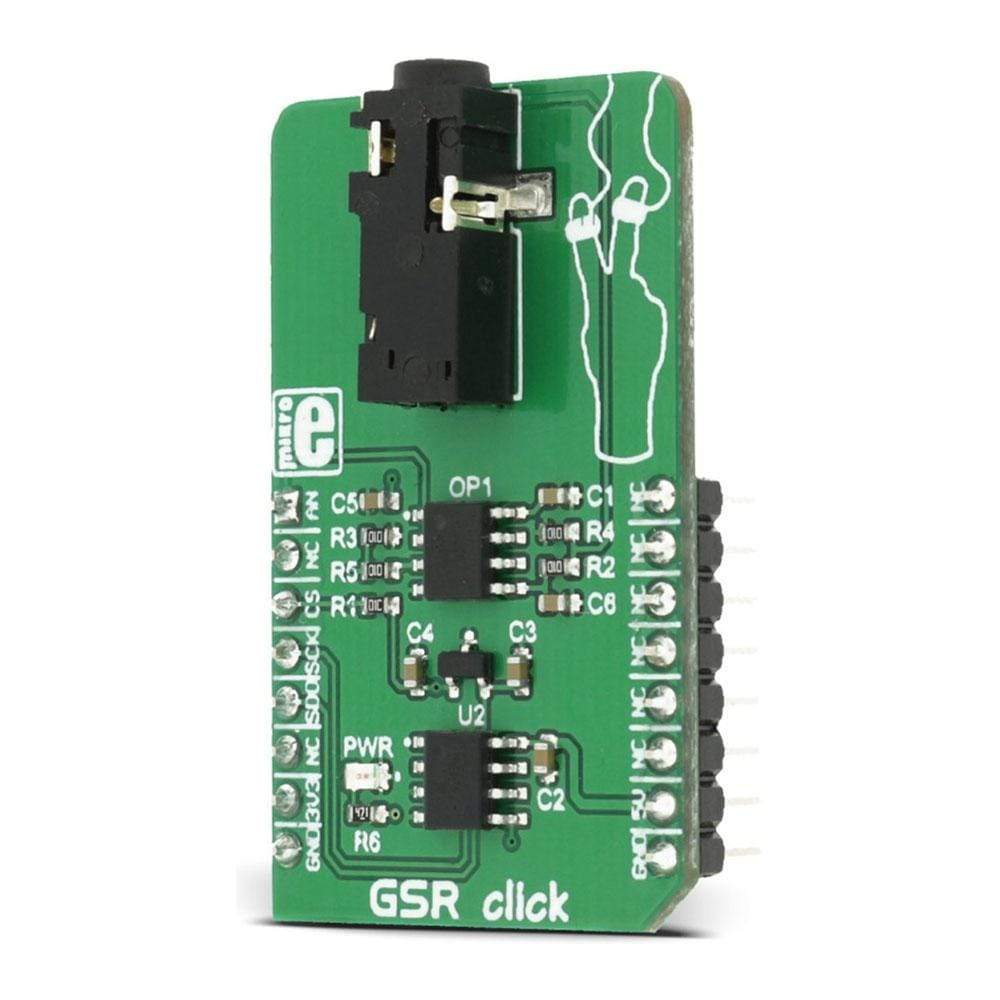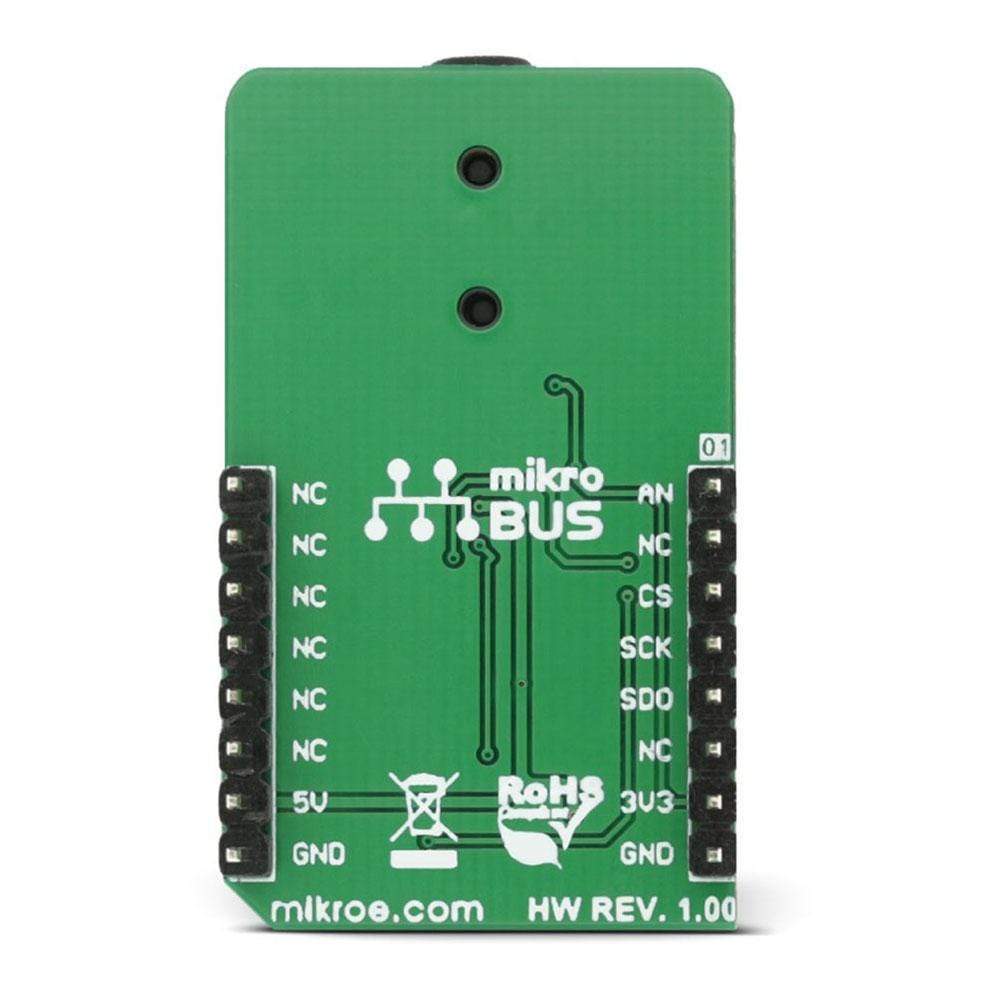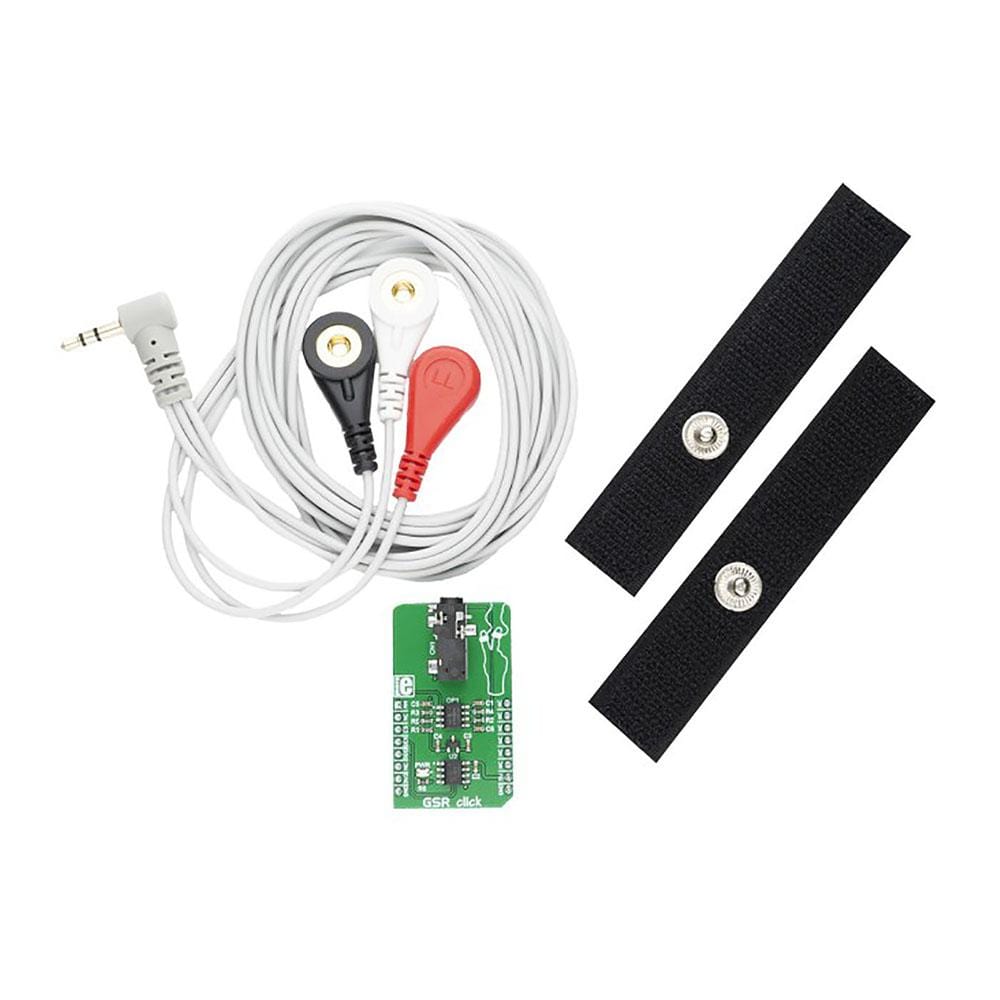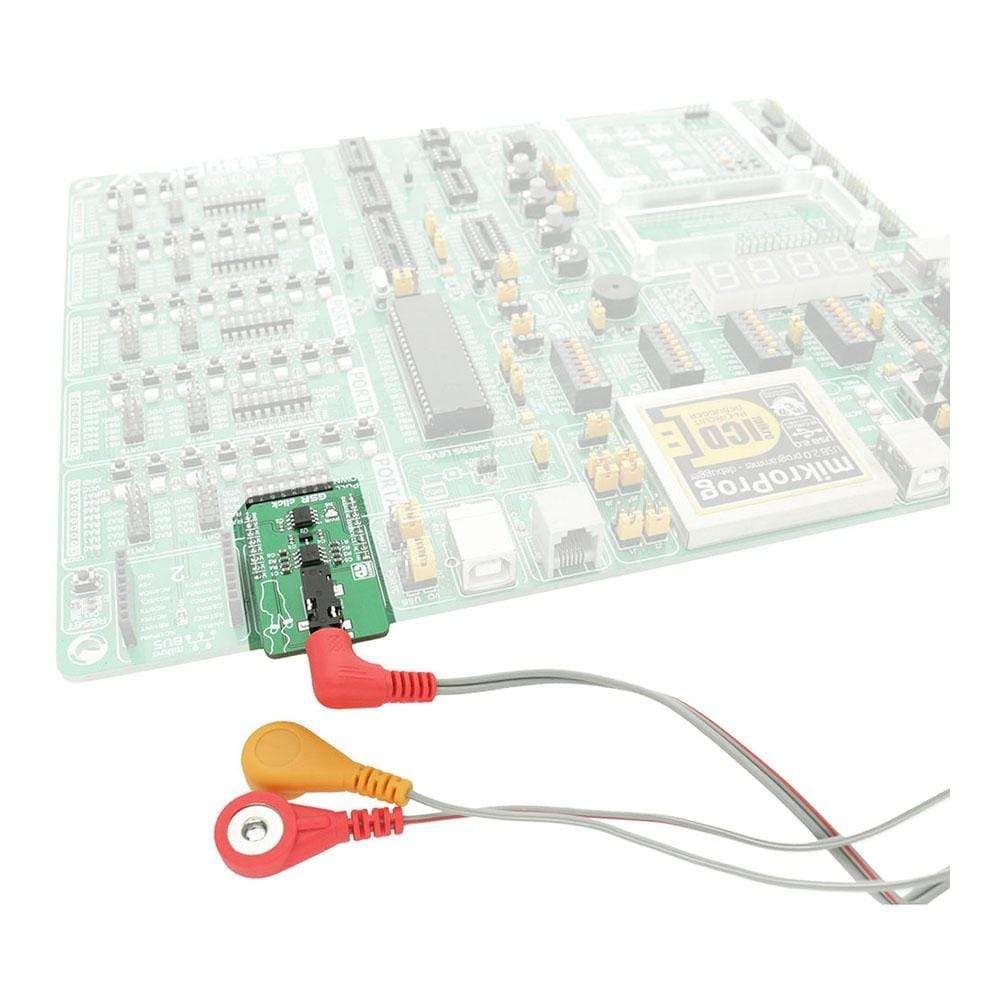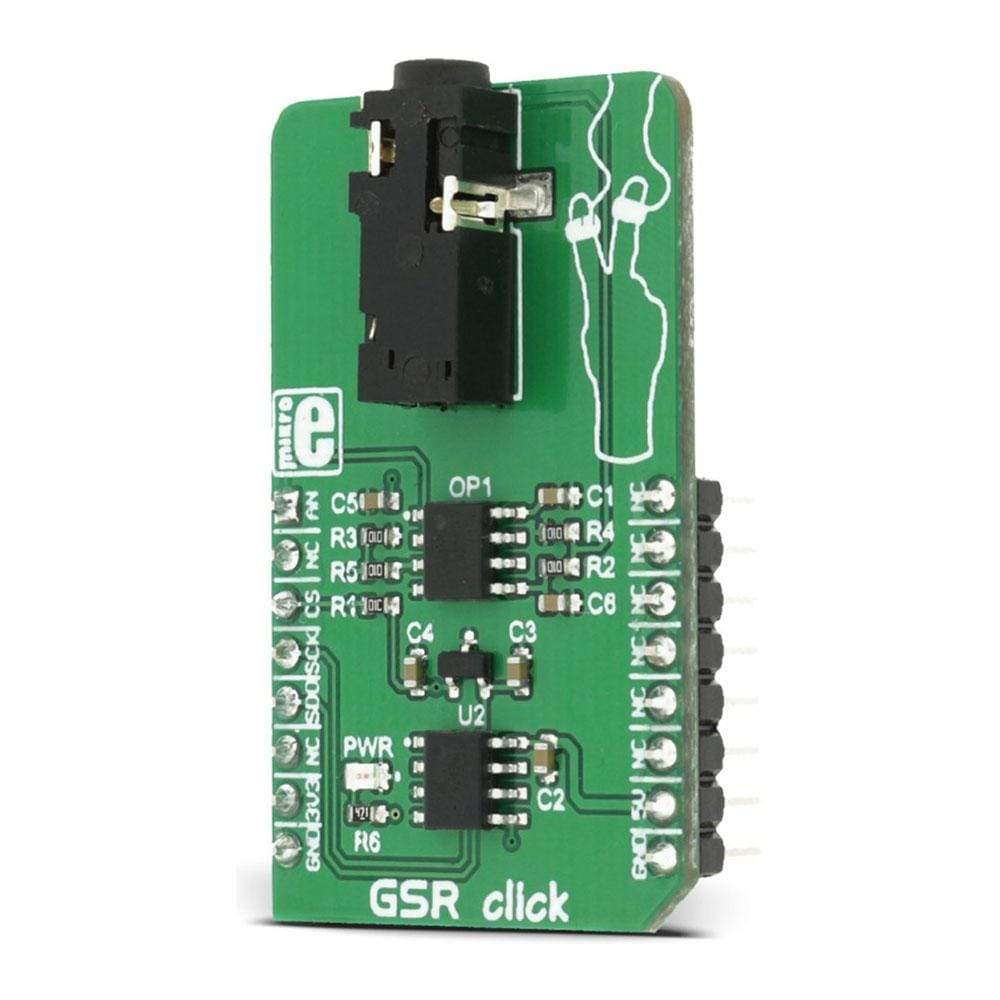
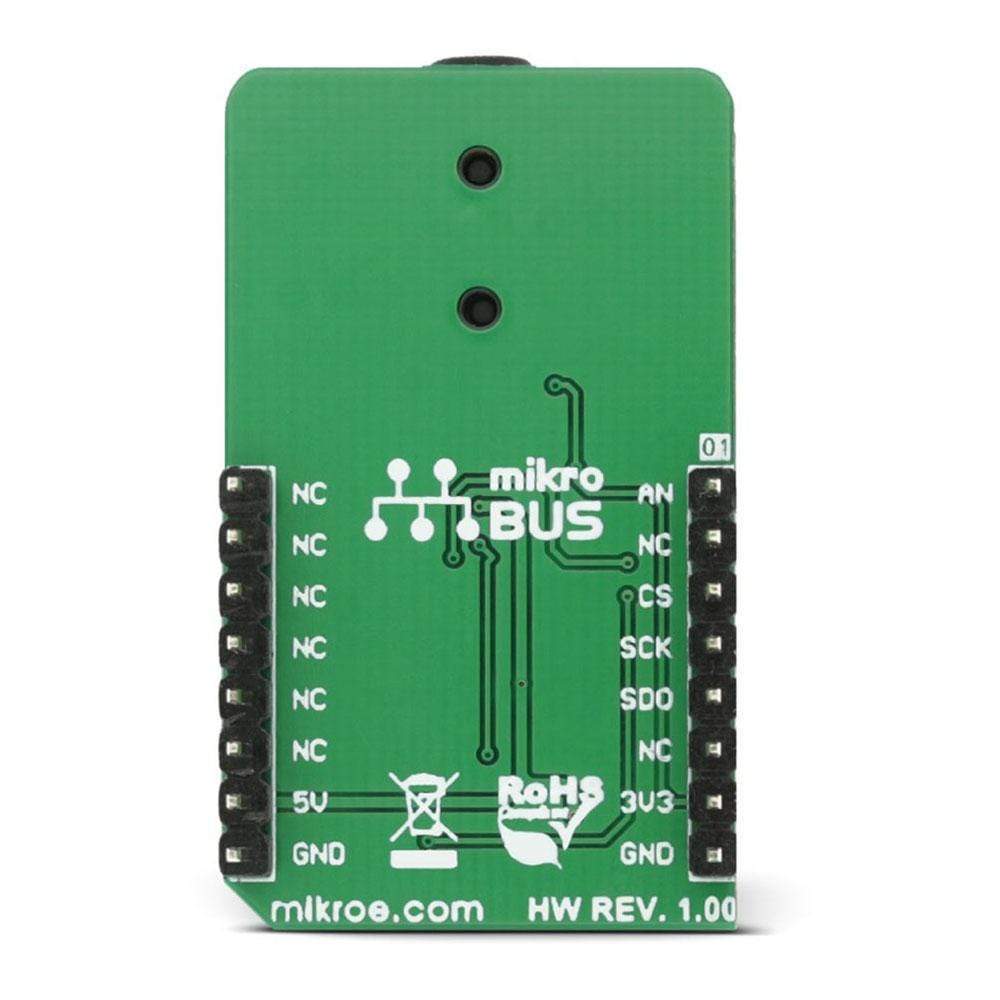
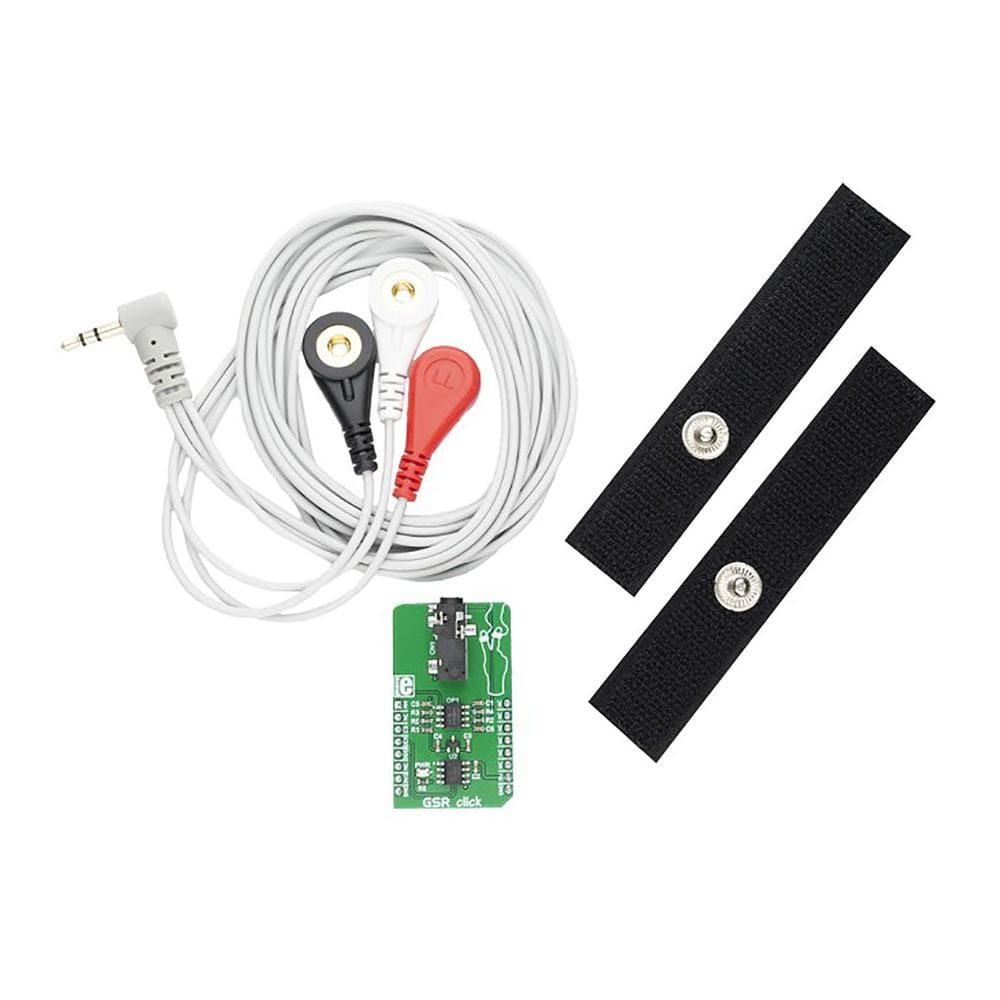
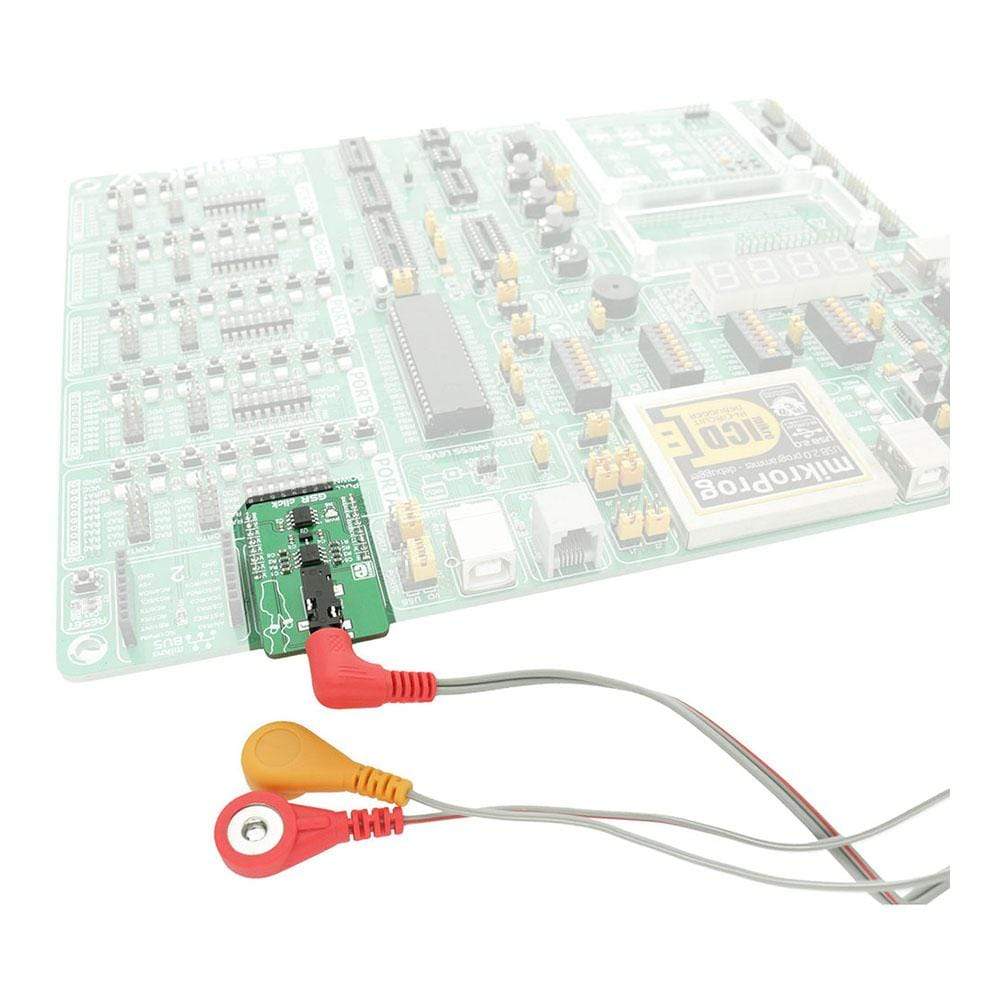
Overview
The GSR Click Board™ can be used to measure the electrodermal activity (EDA) of the human body, also known as the galvanic skin response (GSR). EDA is actually the property of the human body that causes continuous variation in the electrical characteristics of the skin. EDA monitoring is usually combined with the monitoring of the heart rate, respiratory rate, and blood pressure, giving a complete insight into some of the parameters of the autonomous nervous systems of the human body.
Downloads
The GSR Click Board™ can be used to measure the human body's electrodermal activity (EDA), also known as the galvanic skin response (GSR). EDA is the property of the human body that causes continuous variation in the electrical characteristics of the skin. EDA monitoring is usually combined with the monitoring of the heart rate, respiratory rate, and blood pressure, giving a complete insight into some of the parameters of the autonomous nervous systems of the human body.
EDA measurement is a component of modern polygraph devices, often used as lie detectors. Recent research reveals there is more to EDA than it seems, so the studies continue in that direction. The GSR Click Board™ is ideally suited to be used as a research and experimenting tool and for building helpful test applications based on the EDA response - such as the polygraphs.
How Does The GSR Click Board™ Work?
EDA is a standard measure of autonomic nervous system activity. Skin conductance is not under conscious control, it is autonomously controlled by the sympathetic activity and cognitive and emotional states subconsciously. Therefore, the skin's electric resistance offers direct insights into autonomous emotional regulation.
The working principle of the GSR Click Board™ is based on the voltage divider, composed of two resistors. One resistor is a fixed resistor 100kΩ (R4), and the second is the human skin, acting as the variable resistor. DC Voltage is applied to the skin via one electrode connected to the 3.3V rail. The other electrode closes the electrical circuit through the skin and back to the Click Board™ board. The voltage at the voltage divider will vary depending on the skin's resistance.
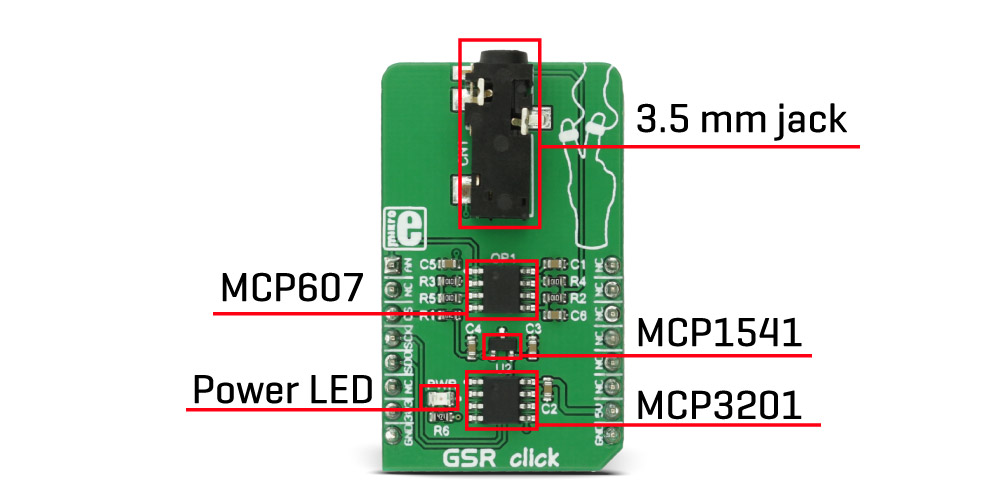
The GSR Click Board™ uses the MCP607, a dual CMOS low-noise OPAMP made by Microchip, and the MCP3201, a 12bit SAR type ADC, made by the same company. The input stage consists of the aforementioned voltage divider and a frequency limiting capacitor. This signal is then fed to the first half of the OPAMP, set to a unity gain. It is used to condition the signal before entering the ADC.
The onboard ADC IC uses the SPI for communication with the MCU. The SPI interface pins are routed to the appropriate mikroBUS™ pins. MCP3201 ADC also needs a clean and stable reference voltage, which is provided by the MCP1541, a small, 3-pin specialised reference voltage IC, from Microchip. The 5V rail is routed to the voltage reference input and the VCC pin of the ADC IC and the OPAMP IC. This means that the Click Board™ board™ needs both 3.3V and 5V for a proper operation.
The other half of the OPAMP is used as the input buffer for the measured signal, and its output is routed to the AN pin of the mikroBUS™. This signal is analogue and can be used for either more accurate sampling or for applying some other type of measured signal processing.
GSR Click Board™ has an onboard 3.5 mm jack, used to securely connect the electrodes to the board.
SPECIFICATIONS
| Type | Biometrics |
| Applications | The GSR Click Board™ can be used for measurement of the EDA factor of the human body, allowing insight in some of the human autonomic nervous system parameters. |
| On-board modules | MCP607 2.5V to 6.0V Micropower CMOS Op Amp, MCP3201 2.7V 12-Bit A/D Converter with SPI Serial Interface, MCP1541 2.5V, and 4.096V Voltage References |
| Key Features | The Click Board™ features a precise 12bit AD converter so that the measured data can be digitally processed by the MCU via the SPI, it also outputs a buffered analogue signal for further processing (analogue or digital) |
| Interface | Analog, SPI |
| Compatibility | mikroBUS |
| Click board size | M (42.9 x 25.4 mm) |
| Input Voltage | 3.3V,5V |
PINOUT DIAGRAM
This table shows how the pinout of the GSR Click Board™ corresponds to the pinout on the mikroBUS™ socket (the latter shown in the two middle columns).
| Notes | Pin |  |
Pin | Notes | |||
|---|---|---|---|---|---|---|---|
| Analog | AN | 1 | AN | PWM | 16 | NC | |
| NC | 2 | RST | INT | 15 | NC | ||
| Chip Select | CS | 3 | CS | RX | 14 | NC | |
| SPI Clock | SCK | 4 | SCK | TX | 13 | NC | |
| SPI Data Output | SDO | 5 | MISO | SCL | 12 | NC | |
| NC | 6 | MOSI | SDA | 11 | NC | ||
| Power Supply | +3V3 | 7 | 3.3V | 5V | 10 | +5V | Power Supply |
| Ground | GND | 8 | GND | GND | 9 | GND | Ground |
ONBOARD SETTINGS AND INDICATORS
| Label | Name | Default | Description |
|---|---|---|---|
| PWR | PWR | - | Power LED indicator |
| CN1 | CN1 | - | 3.5mm jack |
| General Information | |
|---|---|
Part Number (SKU) |
MIKROE-2860
|
Manufacturer |
|
| Physical and Mechanical | |
Weight |
0.018 kg
|
| Other | |
Country of Origin |
|
HS Code Customs Tariff code
|
|
EAN |
8606018712137
|
Warranty |
|
Frequently Asked Questions
Have a Question?
Be the first to ask a question about this.

